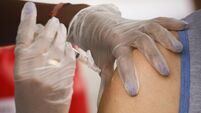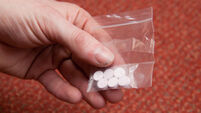In the shade: stay sun smart at home
Dr Gillian Murphy, consultant dermatologist at Beaumont Hospital, Dublin, said pottering around the garden or playing a few rounds of golf on a sunny day can be enough to spark the disease.
“There is no such thing as a safe tan,” said Dr Murphy.
“If people must be out in the sun for any period of time, especially during the midday sun, we would urge them to ensure coverage with sunscreen that contains at least sun protection factor 15+,” she said.
Of the 5,736 cases of skin cancer diagnosed in Ireland in 2001, 401 are of malignant melanoma. Diagnosed at an early stage, malignant melanoma can usually be cured, but diagnosed later it is more likely to spread and can be fatal.
Although most people now know they should wear protective cream when in the sun abroad, there is concern that the message to be just as careful at home is being largely ignored.
The society, which will launch its annual SunSmart campaign on Monday, May 23, is concerned that as the trend to tan and be in the sun in Ireland increases, so will the number of people reporting cancer despite never going overseas.
Dr Murphy also pointed out that sunscreen should never be a first choice as a sun protection measure or a measure to allow people to stay out in the sun for longer.
“People should only use sunscreen as part of a wider sun-protective strategy. People need to cover up to get the best form of protection and to move to the shade when the sun is at its highest,” she advised.
Skin cancer is caused by exposure to UV radiation. The rays damage DNA, the material that makes up genes that control the growth of skin cells.
Early detection of cancer is crucial, so people are advised to look out for new lumps or growths, a sore that does not heal or scaling red areas that bleed easily.
People should also look out for changes in moles as they can indicate malignant melanoma. These changes may or may not be painful or itchy. “All changes should be checked out by a doctor,” Dr Murphy urged.













